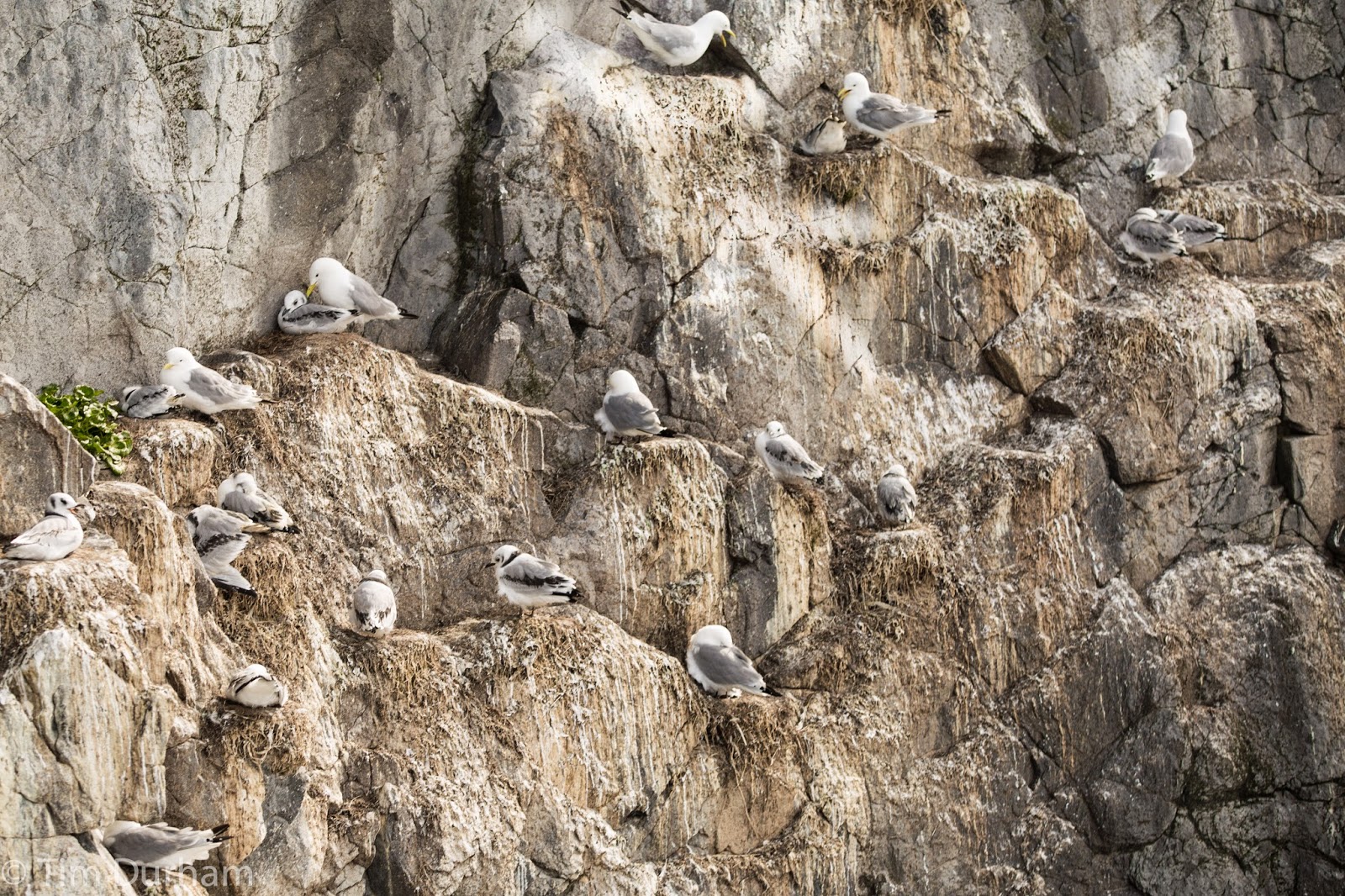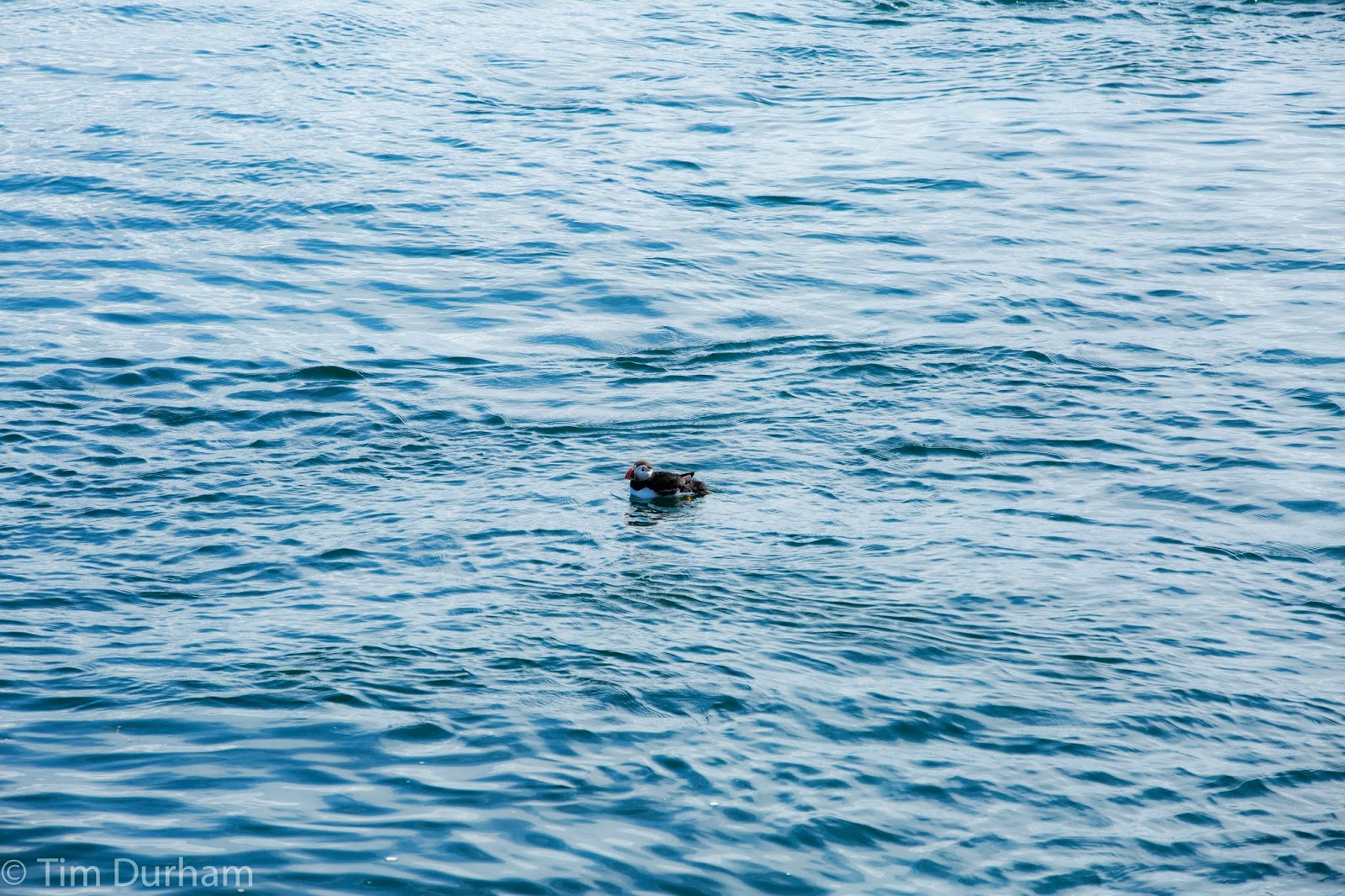There are regular tours and vacations for regular people, and they are very.. um... nice. They really are. In fact we're taking a cruise in December. They're easy, and safe and can be very entertaining, not to mention relaxing. "Ahhh, I think I'll read on the beach or maybe take a nap."
The descent into Thrihnukagigur isn't one of them.
I guess Winnie and I aren't what you might call full-time "regular", because... Oh, heck, I don't know... We just tend to gravitate toward trips that are a bit more intrepid, exotic and unusual. Beautiful scenery and great fellow adventurer/travelers are real plusses, too.
The descent into Thrihnukagigur definitely IS one of these "irregular" adventures. The query "Are you going into the volcano?" is burning up travel agent land lines as we speak. When told of our plans, our friends here in America generally responded with the question "Are you both *#%*ing crazy?"
This professionally produced trailer provides a good introduction to this new trip:
Images from our stroll
I was a little concerned about whether my beat-up health profile was "up to" the trek. I'm somewhat older, and definitely high-mileage. What few brochures we could find clearly stated that "Those who opt to take the tour need to be 'relatively fit', as it involves a three kilometer fast-paced trek across a ragged lava field trail to the Base Camp at lip of the crater (and a return hike on re-emergence from the chamber)". |
| The trail to Thrihnukagigur |
Iceland’s propensity for sudden explosions and subterranean earthquake swarms can be explained by its position on the planet. Although the country appears to be an island, it is actually the highest point of the Mid-Atlantic Ridge, a long chain of underwater mountains.
Iceland also sits at a point where the North American and Eurasian continental plates meet. The two plates are slowly drifting apart, leading to tearing in the Earth’s crust. This 'cracking' leads to the expulsion of magma and other ejecta through our little blue planet's crust.
Also, the locals say that the island usually has a major eruption about once every three years. It had been four years since the Eyjafjallajokull volcano erupted with great force in March 2010, spewing out a vast cloud of ash and other ejecta that caused huge problems for the airline industry across Northern Europe. Iceland was a year overdue. Was this an opportune time to be going down into an "extinct" 4000 year old volcano? Well, the travel folks assured us that this expedition was absolutely safe. Would they fib to us? Nyahh... We're IN! Let's go!
I was by FAR the most... um... 'senior' person on the trek.
The official Silverback on the trek
The good news: What I lack in health, I make up for in stubborn. Also, there were several stops along the way (pant, pant, huff, puff) for some great mine-lectures on volcanic geology (our guide made it fun and interesting at the same time).
Oh... And elves. Yes, elves. Icelanders believe in Elves. We learned what they might look like, where they live, and the proper courtesy to extend to strangers you meet who might, in fact, really be an elf!
Nota bene: I am now a believer. Be nice to everyone. You never know if that person you met might really be a elf!
Nota bene: I am now a believer. Be nice to everyone. You never know if that person you met might really be a elf!
What an elf might look like
The eruption that formed Thrihnukagigur 4000 years ago was unique in that the magma didn't solidify at the surface sealing the hole forever. It only gelled on the walls of the throat. In this case, Haraldur Sigurdsson, a local volcanologist, stated that ‘It is like somebody came and pulled the plug, and all the magma ran down out of it.’
Can you imagine rock so hot that it's liquified, under intense pressure, and oozing through kilometer after kilometer of holes, cracks and fissures, and tunnels?
"Geared-up" and ready for the descent!
We have finally arrived at the pinnacle of the cinder cone that we'll be exploring. Our guide is explaining the harnessing procedure for our descent. After harnessing up, we'll walk out to the end of this "bridge to nowhere" to catch our ride on the window washing platform that National Geographic commissioned the Germans to build/install a few years ago.
And if Germans built it... I'll ride on it!
We're going down there?
Yes. Waaay past where the cables go out of sight. I'm pondering the fact that there have been more humans in space than have ever been to the bottom of this pit into Hades. Uber cool! See the rollers on the side of our German window-washer platform? They're there to help squeeze our little platform through a rather tight bottleneck many meters from the surface. I would NOT want to get stuck on this "elevator" dangling a couple hundred feet above the boulders strewn about the floor somewhere below us!
Images from our descent
Starting down. We're excited!
About half-way down and descending, I leaned out sideways over the end of our window-washing platform... First part of the clip is looking back up (again, sideways, remember?)...
thence panning downward toward our goal.
Water continually seeps from tiny cracks in the rock. The deeper into the abyss we glided, the larger the drops of water got. For some reason, it struck our whole group (five of us) as funny. It's hilarious to see a giant drop of water smack down dead center on the top of someone's helmet. What a fun group of folks.
And...
we're starting to see some colour burned into the cinder-black lava rock! Yes, I remember now, someone mentioned colours or something like that. See it? There's some purple and magenta burned into the rock.
Another descent successfully completed, after climbing off the landing platform, shooters prep their cameras for Subterranean Shooting. With growing anxiety and tension, I fumble with my Canon... looking on it's top... sides... front... Sh*t! The 'PRNDL' has M, Av, Tv, P... but no damned "S" for subterranean." Alas, woe is me. I'd never SS'd before! So now you know. These images are all experimental. My very first lesson in underground shooting. Ha! I LAUGH in the face of Inexperience! Undaunted, I press ahead...
Here, we catch our breath as our guide explains how the extreme temperatures and pressures of the ejected magma coloured different materials (types of rock and soil) differently. Copper (Cu) burns green, etc. Geeze this guy was not only quite knowledgeable, but it occurred to me that he seemed genuinely nice on the inside, too. Okay ladies, he's smart, good looking, and works hard. Maybe ya oughta consider an Icelandic journey in your future plans. Just saying...
But enough of that, let's go look for some of those "alleged colours" they were talking about topside.
Winnie and Jon try to mentally and photographically capture the colours and dimension of this chamber. Tough...
I advance to their previous position, look up, and discover the slash of colour that they were looking at, moments before...
In this image, I shoot the wall from where they were standing in the previous pic. I'm still (to this day) trying to get my head around 'the intensity of the pastels'. I know, I know, "intense" and "pastels" should never be used in the same sentence. I guess you had to be there...
 |
| The "blaze" up the side of the wall |
This pic reminds me of a thermogram that might measure the intensity of the heat's effect on the stone.. this streak could have been caused by a difference in heat...or a difference in the make-up of the rock. I'm betting on "Heat". Just a hunch... Your thoughts?
Winnie on the trail
...and in other news: There ARE. NO. TRAILS.
One may either politely stand on the landing/take-off platform until the next departure, or step down the (witness: the grand opening of) two wooden steps off the platform. Construction of which was courtesy of previous traveler's (last year) lucre. After that, folks, you are
ON. YOUR. OWN.
There are no trails. You will be climbing across boulders the size of limos (and larger), or that damned aggravating scree dislodged from previous earthquakes.
Tim blazes a "trail". If you can climb over it, then by popular definition... "it's a trail".
Centerfold: Geologist's Monthly magazine
and if that's not absolutely true, it Should be.
(but I love the colours)
And finally, yours truly next to the "drop zone" shooting into the blackness, looking for our ride back to the top.
It was with a deep sense of awe at how tiny and fragile we are that we began our ascent to daylight. But there was more to see on the way up...
and if that's not absolutely true, it Should be.
(but I love the colours)
And finally, yours truly next to the "drop zone" shooting into the blackness, looking for our ride back to the top.
It was with a deep sense of awe at how tiny and fragile we are that we began our ascent to daylight. But there was more to see on the way up...
The brief clip, taken during our ascent to the surface above, exhibits one last bit of evidence of the unimaginably intense heat during the eruption. Can you imagine solid rock being so hot that it oozes and drips down the sides of the chute right after the plug was pulled downstream, emptying it?
Back topside, cheers for a wonderful, successful adventure in Iceland! Yay!
And someone, whom shall remain un-named, left his mark on this magnificent, beautiful island.
Adieu, Iceland. Until we meet again.



















































